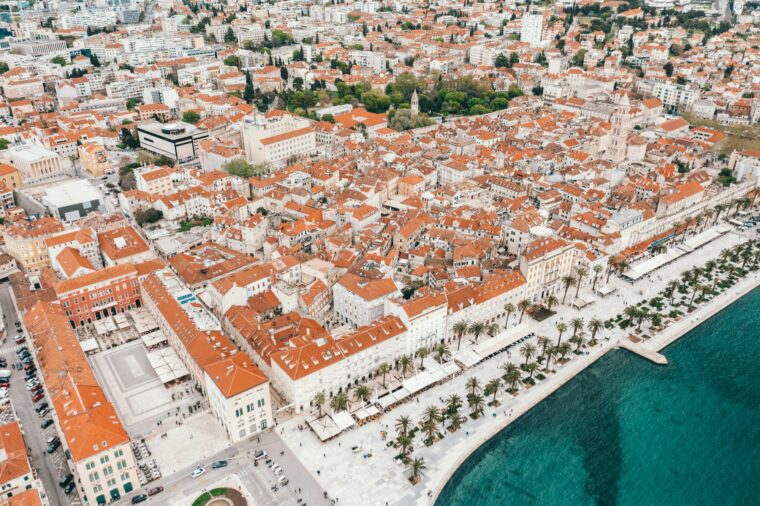Croatia, a jewel on the Adriatic Sea, may be modest in size but stands as a giant in cultural heritage. With ten UNESCO World Heritage Sites packed into just 56,542 square kilometers, this Balkan nation offers one of Europe’s most concentrated collections of protected historical treasures. From ancient Roman palaces to medieval walled cities, from pristine lakes to primeval forests, Croatia’s UNESCO sites tell the story of over two millennia of human civilization and natural evolution in this crossroads of Central and Southern Europe.
The country’s strategic position between East and West has made it a melting pot of influences—Roman, Byzantine, Venetian, Ottoman, and Austro-Hungarian—all leaving their distinctive marks on the landscape and architecture. This rich tapestry of cultural heritage is now preserved for future generations through UNESCO’s protection, offering visitors unparalleled insights into European history, art, and architecture.
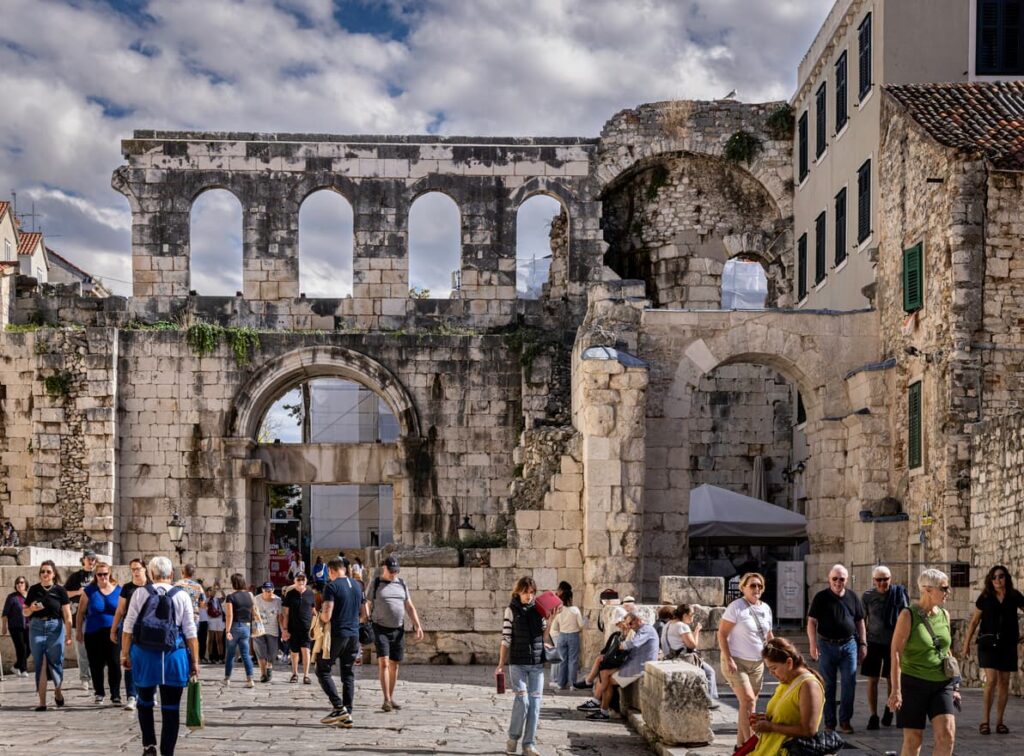
We’ll journey through Croatia’s most iconic UNESCO sites, with special focus on two crown jewels: Diocletian’s Palace in Split and Dubrovnik’s magnificent city walls. We’ll explore their historical significance, architectural marvels, and practical information for visitors. Beyond these famous landmarks, we’ll also introduce you to Croatia’s other UNESCO treasures and suggest how to best experience them—including by sea, through the country’s renowned yacht charter options.
UNESCO World Heritage in Croatia: An Overview
UNESCO (United Nations Educational, Scientific and Cultural Organization) designates World Heritage Sites as places of outstanding universal value to humanity, whether for their cultural significance or natural beauty. These sites receive special protection and conservation attention, ensuring they remain intact for future generations to appreciate and study.
Croatia’s UNESCO journey began in 1979 when its first three sites were inscribed: the Historical Complex of Split with the Palace of Diocletian, the Old City of Dubrovnik, and Plitvice Lakes National Park. This initial recognition highlighted both the country’s exceptional cultural monuments and natural wonders. Over the following decades, seven more sites joined the prestigious list, with the most recent additions being the Stećci Medieval Tombstone Graveyards in 2016 and the Venetian Works of Defence in 2017.
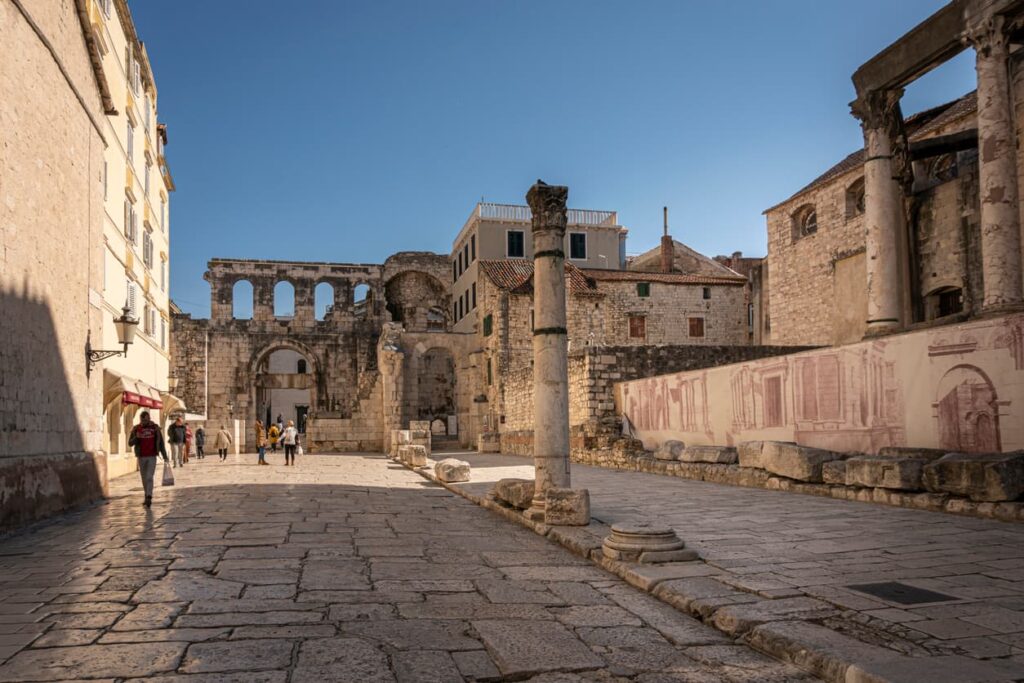
Today, Croatia boasts ten UNESCO World Heritage Sites, comprising eight cultural and two natural sites. They span the length of the country, from the Istrian Peninsula in the north to Dubrovnik in the south, offering visitors a compelling reason to explore beyond the popular coastal areas.
The cultural sites include architectural complexes, historic city centers, religious buildings, and archaeological remains, representing various periods from ancient Roman times through the Middle Ages to the Renaissance. The natural sites showcase Croatia’s remarkable biodiversity and geological formations, from cascading lakes to ancient beech forests.
The UNESCO designation has played a crucial role in preservation efforts, especially following the damage inflicted during the conflicts of the 1990s. It has also boosted cultural tourism, bringing economic benefits while raising awareness about the importance of sustainable visitor management to protect these irreplaceable treasures.
Diocletian’s Palace: A Living Roman Monument
In the heart of Split, Croatia’s second-largest city, stands one of the most remarkable Roman monuments in existence—Diocletian’s Palace. Built between 295 and 305 CE, this massive complex was constructed as a retirement residence for Emperor Diocletian, who made the unprecedented decision to abdicate his imperial throne and spend his final years on the Dalmatian coast near his birthplace.
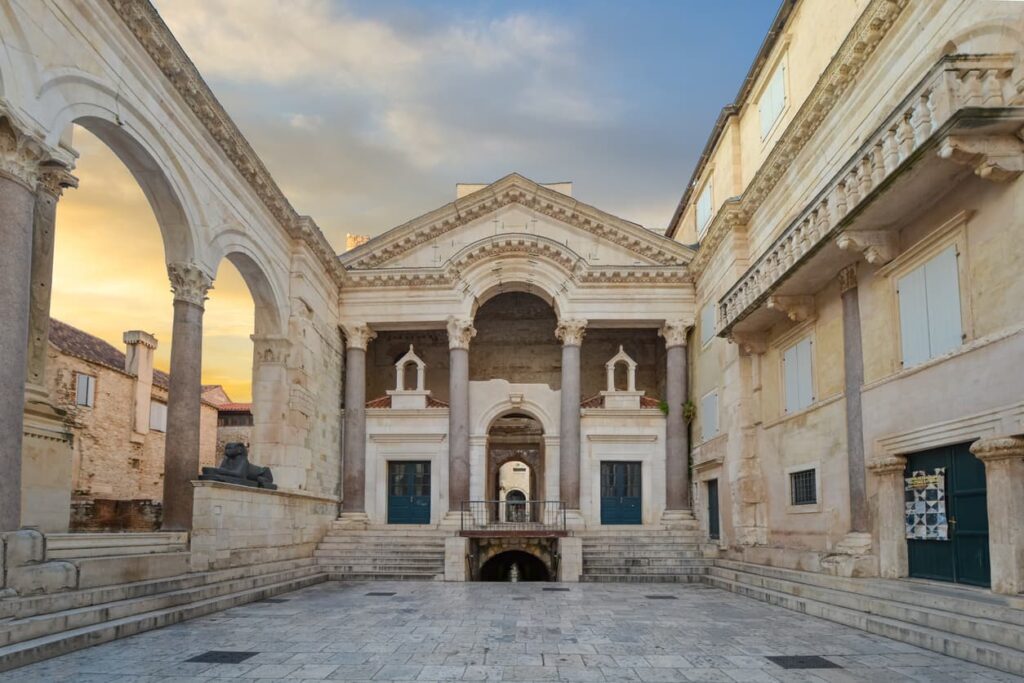
The palace is far more than a single building; it’s a fortified complex covering approximately 7 acres (3 hectares). Its rectangular ground plan measures roughly 215 meters east to west and 180 meters north to south, with walls reaching up to 25 meters in height on the seaside. The complex was designed as a combination of imperial villa and military camp, with the southern half reserved for the emperor’s personal quarters and the northern section housing the military garrison and servants.
What makes Diocletian’s Palace truly unique is its evolution over the centuries. After the fall of the Roman Empire and the abandonment of the palace, it became a refuge for residents of nearby Salona fleeing Avar and Slavic invasions in the 7th century. Rather than remaining an isolated archaeological ruin, the palace transformed into the foundation of a living city. Medieval inhabitants built their homes within its walls, adapting Roman structures and incorporating them into new buildings. This organic development continued through the centuries, creating the remarkable architectural palimpsest we see today.
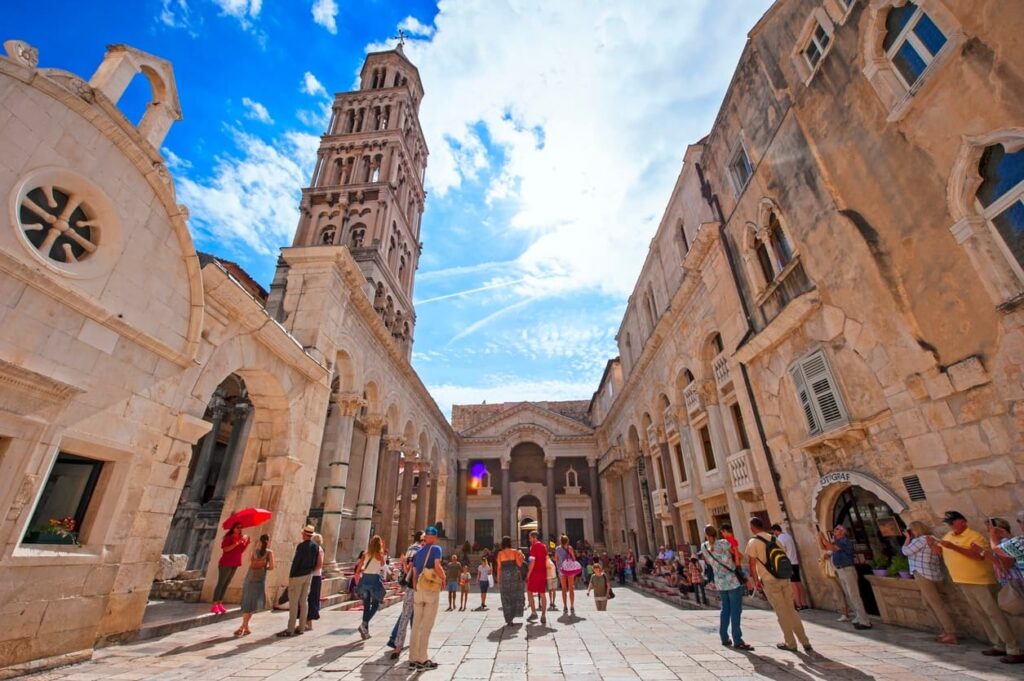
Walking through the palace complex reveals layers of history at every turn. The central square, known as the Peristyle, was once the ceremonial entrance to the emperor’s apartments. Today, it serves as a vibrant public space surrounded by cafes and shops, where visitors can admire the well-preserved Roman columns and arches while sipping coffee. The original Egyptian sphinx brought by Diocletian still watches over the square, a testament to the far-reaching power of the Roman Empire.
The emperor’s mausoleum, ironically, was converted into the Cathedral of St. Domnius in the 7th century and remains one of the oldest functioning Christian cathedrals in the world. Its octagonal structure is topped by a Romanesque bell tower added in the 12th century, which visitors can climb for panoramic views of Split and the Adriatic Sea.
The Temple of Jupiter, another original Roman structure, was transformed into a baptistery, with the ancient Roman coffered ceiling still intact above a much later baptismal font. The palace’s massive substructures, or “cellars,” originally built to elevate the emperor’s apartments above sea level, offer a fascinating glimpse into Roman engineering and now house shops, exhibitions, and events.
Four monumental gates provided access to the palace: the Golden Gate (north), Silver Gate (east), Iron Gate (west), and Bronze Gate (south). Each was flanked by octagonal or square towers, some of which remain visible today. The Golden Gate was the main ceremonial entrance, elaborately decorated to impress visitors approaching from Salona.
The palace’s significance extends beyond its architectural value. It represents a crucial transitional period in Roman architecture, blending classical Roman elements with innovations that would later influence Byzantine styles. Its remarkable state of preservation offers invaluable insights into late Roman imperial architecture and urban planning.
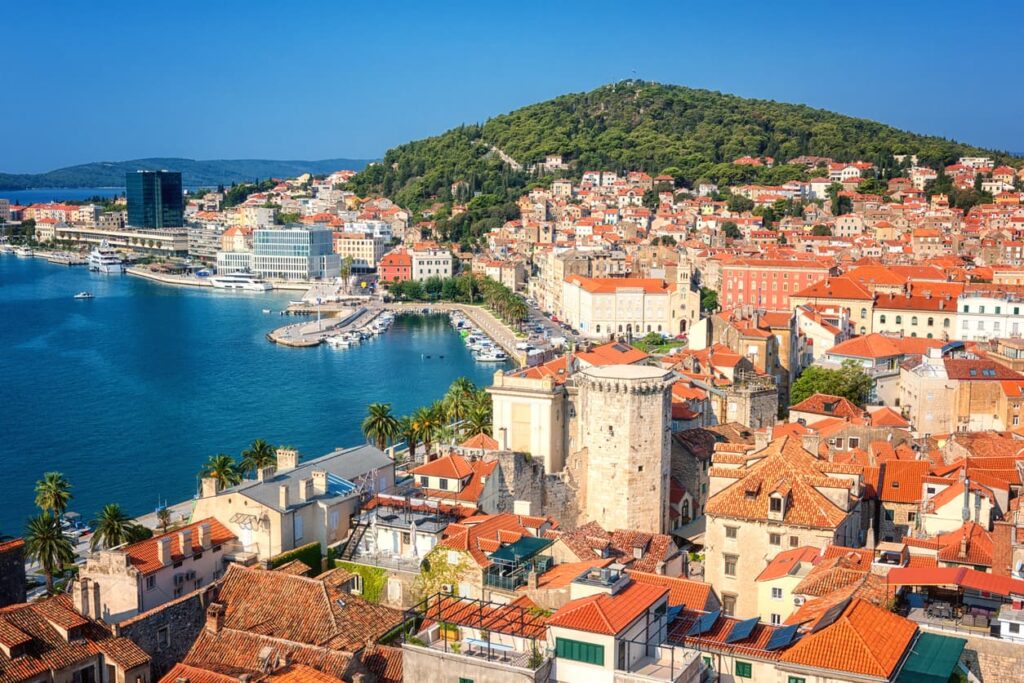
Today, Diocletian’s Palace is not just a tourist attraction but the living heart of Split. Approximately 3,000 people still reside within the ancient walls, making it one of the most unique archaeological sites in the world—a Roman monument that continues to function as a vibrant urban center after 17 centuries. UNESCO recognized this exceptional cultural value by inscribing the Historical Complex of Split with the Palace of Diocletian on its World Heritage List in 1979.
Visitors can explore the palace complex freely, as most areas are public spaces. However, specific sites like the cathedral, bell tower, and substructures require entrance tickets. Guided tours offer deeper insights into the historical and architectural significance of this remarkable monument, where ancient Roman grandeur meets medieval charm in a living, breathing urban environment.
Dubrovnik’s Walls: Medieval Engineering Marvel
Rising dramatically from the azure waters of the Adriatic, the magnificent walls of Dubrovnik stand as one of the most complete and impressive fortification systems in Europe. Often called the “Pearl of the Adriatic,” Dubrovnik’s Old City is entirely encircled by these massive stone barriers that have protected the once-independent Republic of Ragusa (as Dubrovnik was known) for centuries.
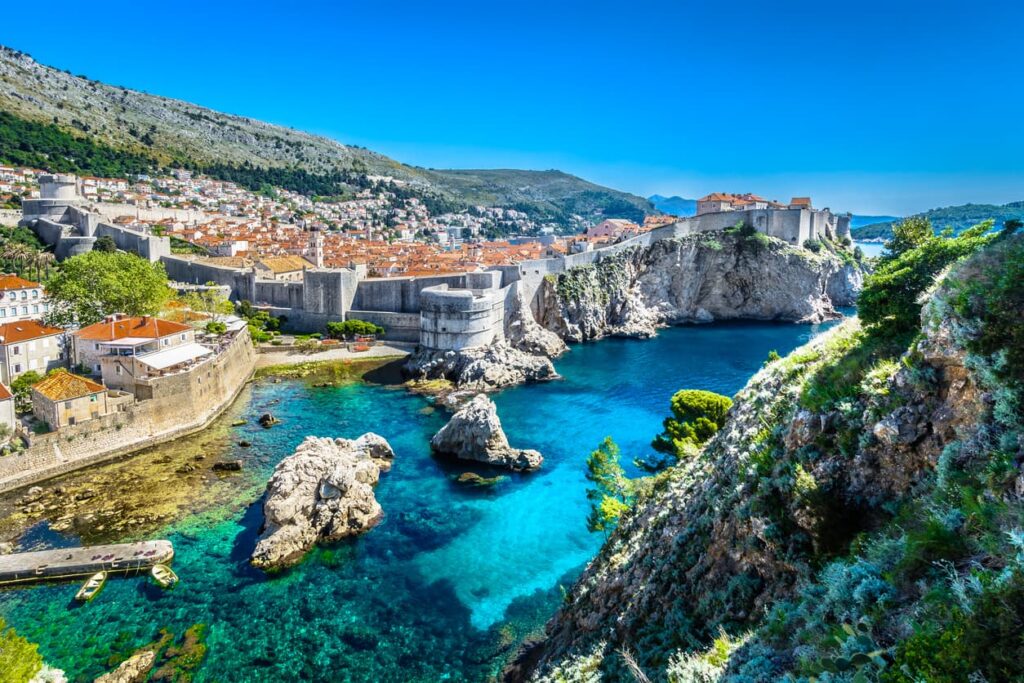
Construction of the first limestone fortifications began in the Early Middle Ages, towards the end of the 8th century. However, the walls as we see them today took shape primarily between the 13th and 17th centuries, with their current form largely defined following a devastating fire in 1292. The walls run an uninterrupted course of approximately 1,940 meters (6,360 ft), encircling most of the old city and reaching a maximum height of about 25 meters (82 ft) in places.
What makes Dubrovnik’s walls particularly remarkable is not just their completeness but their sophisticated defensive design. The land walls on the eastern side are significantly thicker—between 4 to 6 meters (13-20 ft)—reflecting the greater vulnerability to attacks from that direction. The system includes three circular and 14 quadrangular towers, five bastions, two angular fortifications, and the imposing St. John’s Fortress, which guarded the city’s port.
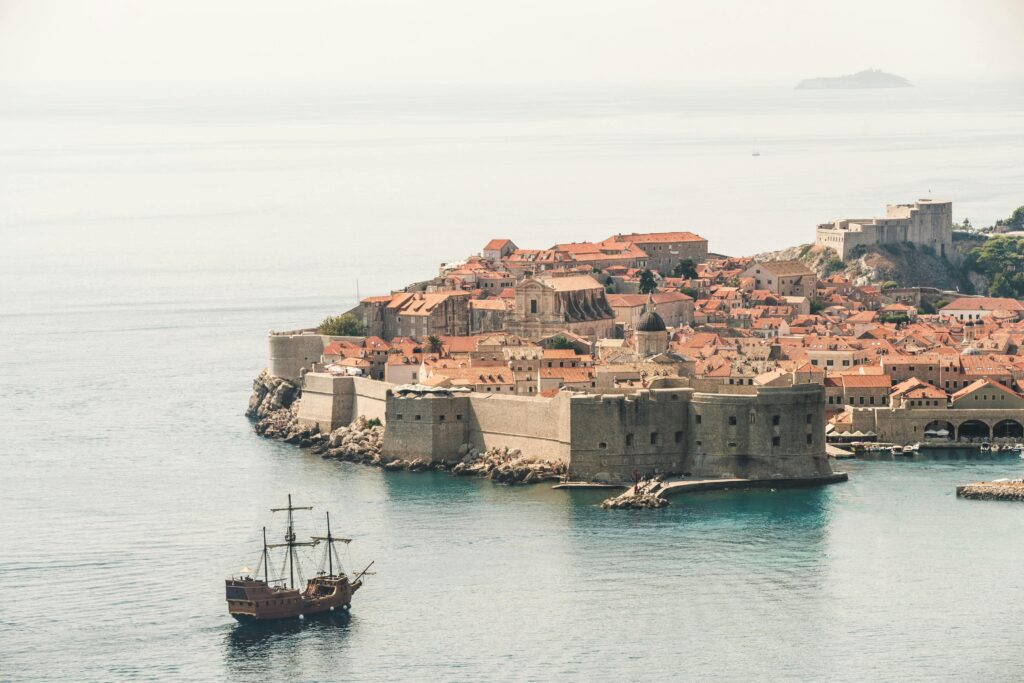
The walls were continuously strengthened over the centuries in response to evolving threats. When the Ottoman Empire conquered Constantinople in 1453, Dubrovnik found itself in an increasingly precarious position. Despite being a small city-state, the Republic of Ragusa managed to maintain its independence through skillful diplomacy, trading relationships, and these formidable defenses. The walls were so effective that the city was never conquered, despite numerous threats throughout its history.
Walking the walls today offers visitors an unparalleled experience and stunning panoramic views. The full circuit takes approximately two hours, with entry points at the Pile Gate, Ploče Gate, and St. John’s Fortress. As you traverse the ramparts, you’ll pass major fortresses that punctuate the walls at strategic points. The most impressive is perhaps Minčeta Tower on the northwestern corner—a massive round fort with a distinctive crown-like top that has become a symbol of Dubrovnik’s freedom and resilience.

On the western approach stands the detached Lovrijenac Fortress, perched dramatically on a 37-meter high cliff. This imposing structure protected the city from both land and sea attacks and features walls up to 12 meters thick on the seaward side. Above its entrance, an inscription reads “Non Bene Pro Toto Libertas Venditur Auro” (Freedom is not sold for all the gold in the world), reflecting the fierce independence of the Ragusan Republic.
The Bokar Fortress, designed in the 15th century by Florentine architect Michelozzo di Bartolomeo, is considered one of the oldest casemate-type fortresses in Europe. It was built specifically to defend the city’s main western entrance and the crucial Pile Bridge.
St. John’s Fortress on the southeastern side protected the city’s port and was expanded several times between the 14th and 16th centuries. Today it houses the Maritime Museum, celebrating Dubrovnik’s seafaring heritage.
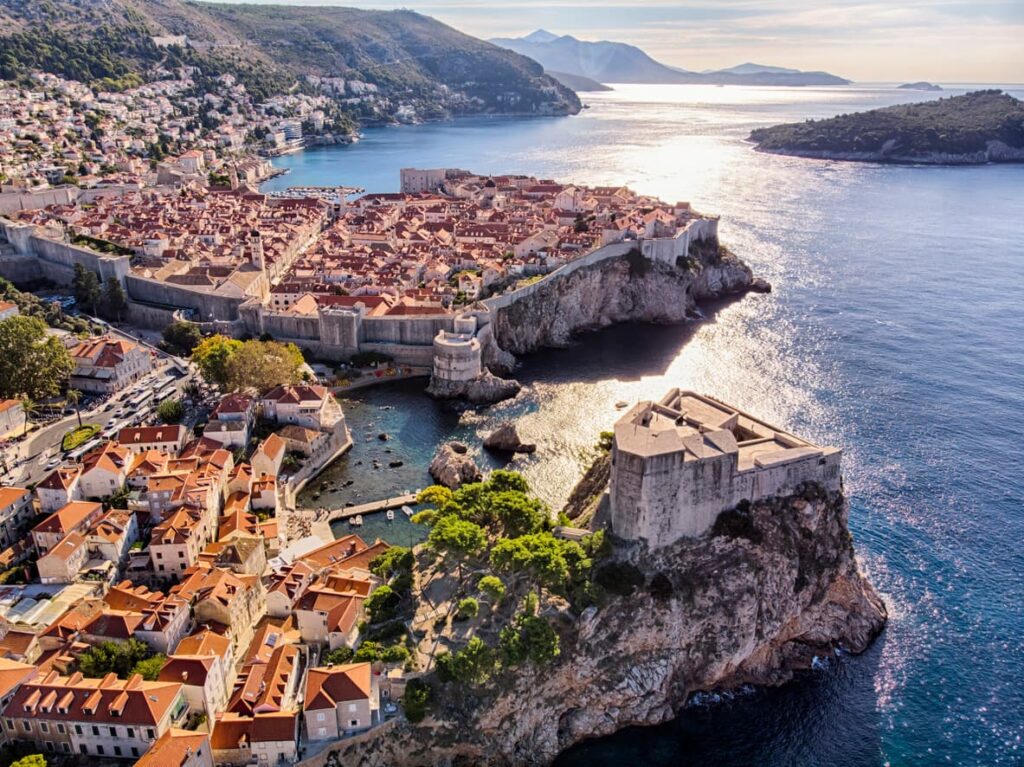
The walls also feature a moat that ran along the outside of the land walls, providing additional protection. More than 120 cannons were once mounted on the fortifications, though few remain today.
Despite their age, the walls have proven remarkably resilient. They withstood a major earthquake in 1667 that devastated much of the city. During the Croatian War of Independence in the 1990s, the Old City suffered significant damage from shelling, but the walls themselves remained largely intact. Following the conflict, UNESCO coordinated a major restoration program to repair the damage, and today the walls stand as proudly as ever.
The Old City of Dubrovnik, including its walls, was inscribed on the UNESCO World Heritage List in 1979, recognizing its outstanding universal value. In 1994, after the war damage, the site was extended to include areas outside the city walls.

Today, Dubrovnik’s walls are one of Croatia’s most popular tourist attractions, welcoming over a million visitors annually. The best times to walk the walls are early morning or late afternoon, avoiding both the midday heat and the largest crowds. While there is an entrance fee, the experience of circumnavigating this perfectly preserved medieval city from above, with the terracotta rooftops on one side and the shimmering Adriatic on the other, is truly priceless.
Beyond the Icons: Other UNESCO Treasures in Croatia
While Diocletian’s Palace and Dubrovnik’s Walls rightfully capture much attention, Croatia’s UNESCO portfolio extends far beyond these famous monuments. The country’s eight additional World Heritage Sites offer equally compelling reasons to explore further, each telling a unique chapter of Croatia’s natural and cultural story.
Plitvice Lakes National Park
As Croatia’s first national park (established in 1949) and one of its first UNESCO sites (inscribed in 1979), Plitvice Lakes represents the country’s most spectacular natural wonder. This breathtaking system features 16 interconnected lakes arranged in cascades, created by the deposition of travertine barriers over millennia. The lakes shift in color from azure to green, gray, or blue, depending on the mineral content and organisms in the water, as well as the angle of sunlight.
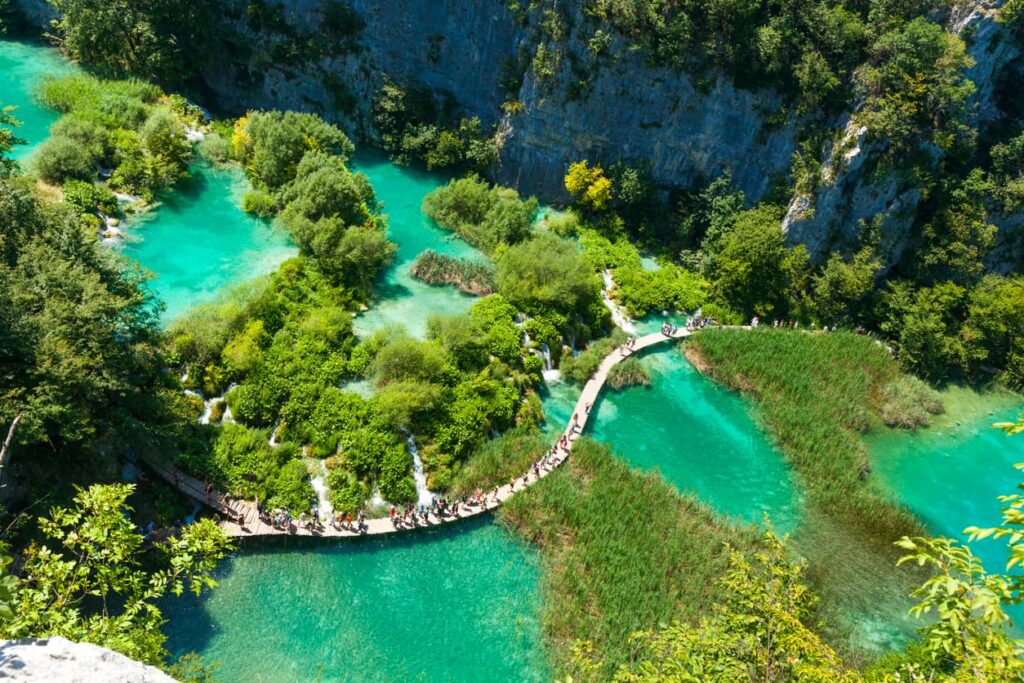
The park spans nearly 300 square kilometers of forested landscape, providing habitat for bears, wolves, rare birds, and numerous endemic species. Wooden walkways guide visitors through this pristine environment, offering close-up views of waterfalls and crystal-clear pools. Unlike many UNESCO natural sites worldwide, Plitvice remains remarkably accessible while maintaining strict conservation measures.
Historic City of Trogir
Often overshadowed by its larger neighbor Split, the small island town of Trogir offers one of the best-preserved Romanesque-Gothic complexes in Central Europe. Inscribed on the UNESCO list in 1997, Trogir’s medieval core sits on a small island connected to the mainland and the larger island of Čiovo by bridges.
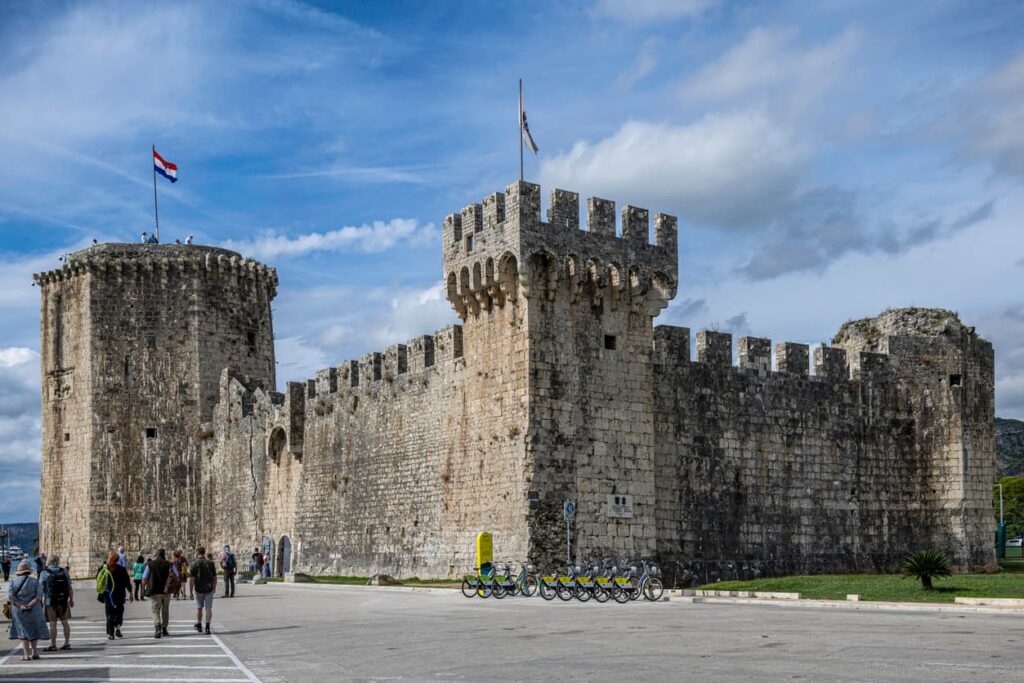
The town’s layout has remained virtually unchanged since the 13th century, with narrow winding streets opening onto charming squares. Its crowning jewel is the Cathedral of St. Lawrence, featuring the remarkable Portal of Radovan—a 13th-century masterpiece of Romanesque sculpture. The nearby Kamerlengo Fortress, built by the Venetians in the 15th century, offers panoramic views of the town and surrounding waters.
Episcopal Complex of the Euphrasian Basilica in Porec
In the picturesque coastal town of Porec on the Istrian Peninsula lies one of the most complete surviving early Christian cathedral complexes in Europe. The Euphrasian Basilica, named after the bishop who commissioned it in the 6th century, represents an outstanding example of Byzantine art and architecture in the Mediterranean region.
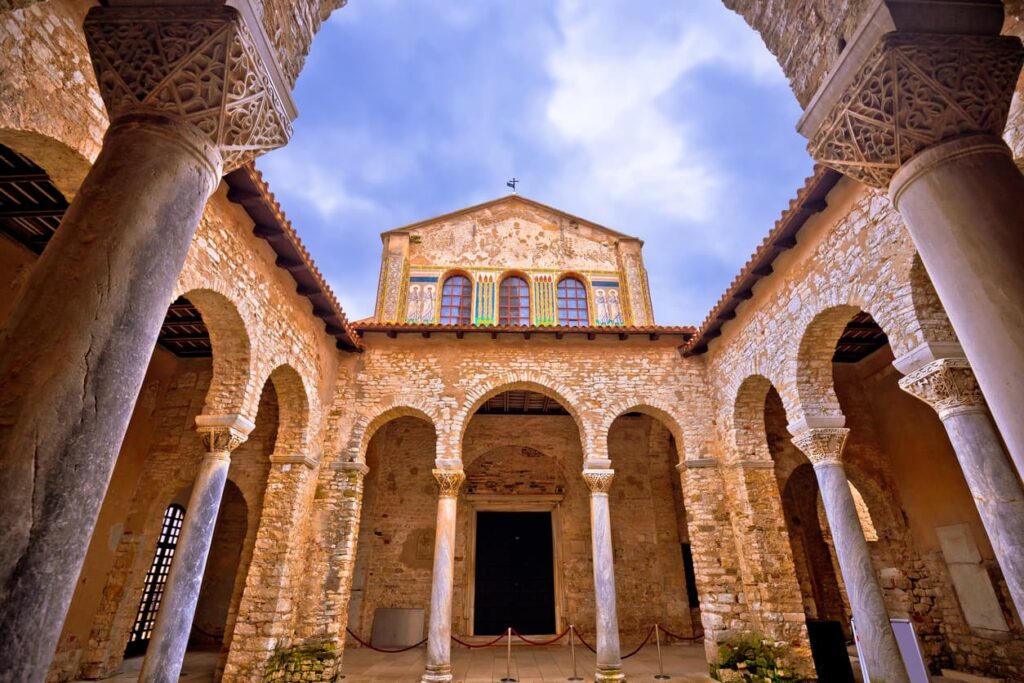
The basilica’s most spectacular feature is its glittering gold mosaics, particularly the apse mosaic depicting the Virgin and Child surrounded by angels and local saints. The complex includes the basilica itself, an atrium, a baptistery, and the bishop’s palace, all remarkably well-preserved. The site demonstrates the important religious and cultural connections between the Adriatic coast and the Byzantine world.
Cathedral of St. James in Šibenik
Unlike many other Croatian coastal towns that showcase Venetian Gothic and Renaissance styles, Šibenik boasts a purely Croatian architectural masterpiece. The Cathedral of St. James, built between 1431 and 1535, was inscribed on the UNESCO list in 2000 for its unique construction method and decorative elements.
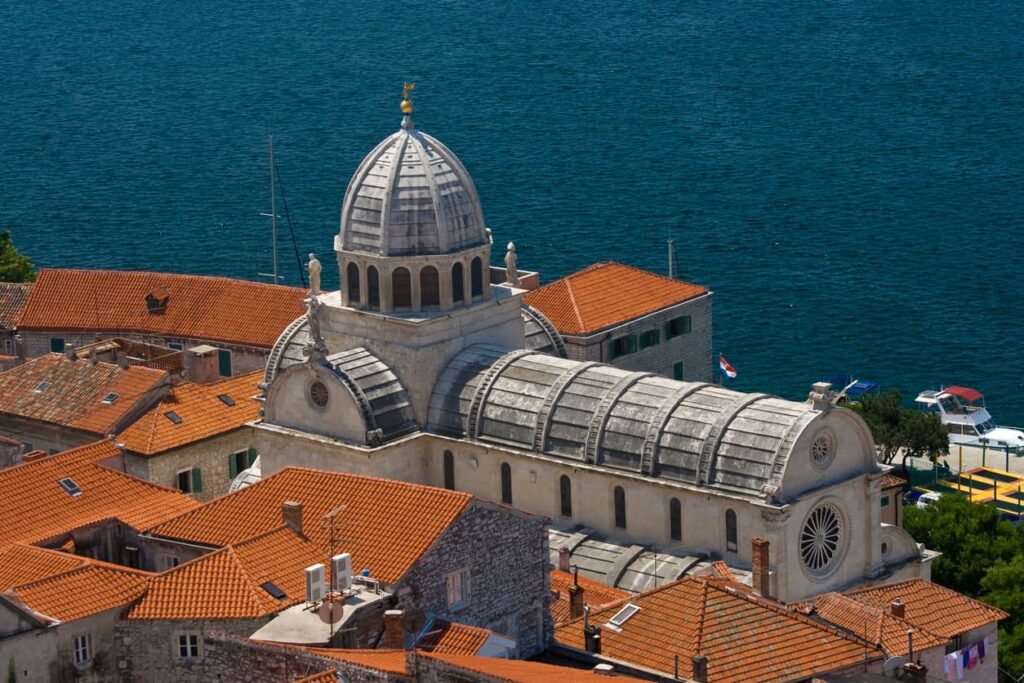
The cathedral was built entirely of stone, with no brick, wood, or other materials in its structural elements. Its most innovative feature is the barrel-vaulted roof constructed from interlocking stone slabs. The exterior is adorned with a frieze of 71 sculpted faces representing local citizens of the time—an unusual humanistic touch for a religious building of this period.
Stari Grad Plain on Hvar Island
When Greek colonists from the island of Paros settled on Hvar in the 4th century BCE, they established an agricultural colony and divided the fertile plain into geometric parcels separated by dry stone walls. Remarkably, this ancient land division system has remained virtually intact for 24 centuries, making it one of the oldest continuously cultivated landscapes in the world.
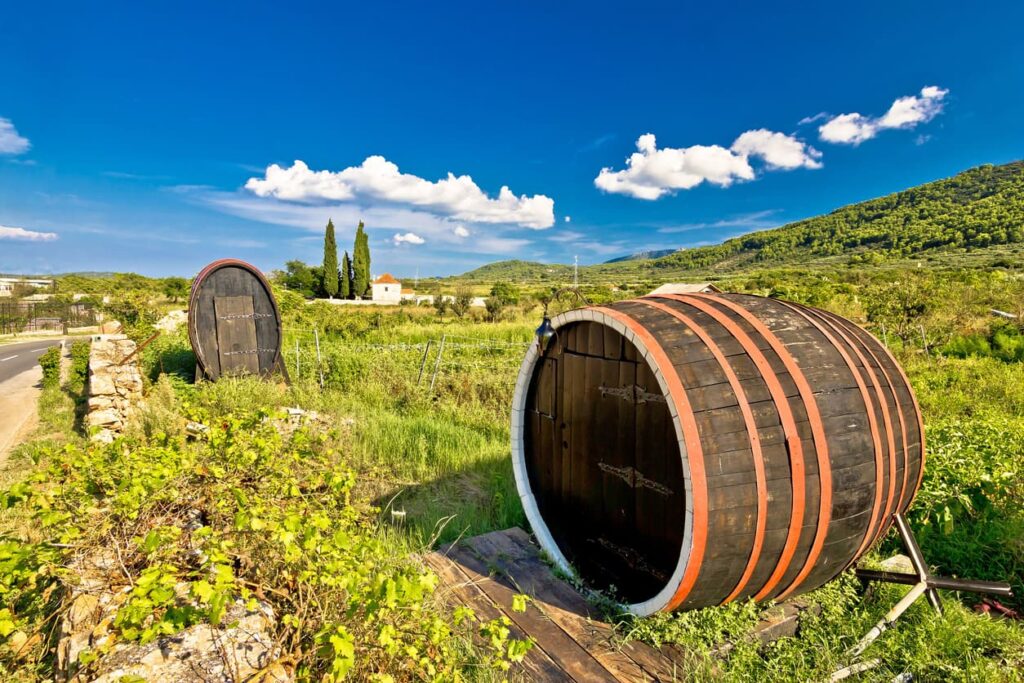
The plain, which received UNESCO recognition in 2008, still produces the same crops—primarily grapes and olives—using traditional methods. The ancient stone walls, shelters, and water collection systems demonstrate the remarkable continuity of agricultural practices from ancient Greek times to the present day.
Ancient and Primeval Beech Forests
Part of a transnational UNESCO site spanning 12 European countries, Croatia’s contribution includes pristine beech forest areas within Northern Velebit National Park and Paklenica National Park. These forests represent the exceptional expansion of European beech since the last Ice Age, demonstrating how this single tree species came to dominate diverse environments across the continent.
The protected areas showcase beech forests in various stages of evolution, with some trees reaching ages of 300 years or more. These ancient woodlands provide crucial habitat for numerous species and offer visitors a glimpse of how much of Europe’s landscape would appear without human intervention.
Stećci Medieval Tombstone Graveyards
Another transnational site shared with neighboring Bosnia and Herzegovina, Serbia, and Montenegro, the Stećci are monumental medieval tombstones that dot the landscape of these four countries. Croatia’s contribution includes two necropolis sites featuring these distinctive limestone tombstones, which date from the 12th to 16th centuries.
The Stećci are decorated with a variety of motifs—including spirals, rosettes, vines, and scenes of hunting, dancing, and jousting—that provide insights into medieval life and beliefs. They represent a unique fusion of religious and cultural influences in this border region between Western and Eastern Christianity.
Venetian Works of Defence
The most recent addition to Croatia’s UNESCO collection (inscribed in 2017) comprises defensive structures built by the Venetian Republic in the 16th and 17th centuries. Croatia’s contribution to this transnational site includes the defensive system of Zadar and the St. Nicholas Fortress in Šibenik.
These sophisticated fortifications represent the evolution of Venetian military architecture in response to the introduction of gunpowder and artillery. They showcase innovative defensive solutions that helped the Venetian Republic maintain its trading empire across the Adriatic and eastern Mediterranean for centuries.
These eight additional UNESCO sites, along with Diocletian’s Palace and Dubrovnik’s Walls, demonstrate Croatia’s remarkable cultural and natural diversity. From ancient Greek agricultural systems to medieval tombstones, from pristine lakes to primeval forests, these protected sites offer visitors authentic experiences beyond the usual tourist trails.
Yacht Charter Croatia: The Ultimate Way to Explore UNESCO Sites
Croatia’s stunning coastline, with its crystal-clear waters and over 1,200 islands, offers a unique opportunity to experience the country’s UNESCO World Heritage Sites from a completely different perspective—by sea. A yacht charter in Croatia provides not just a mode of transportation but an unforgettable journey that combines cultural exploration with the freedom and luxury of private sailing.
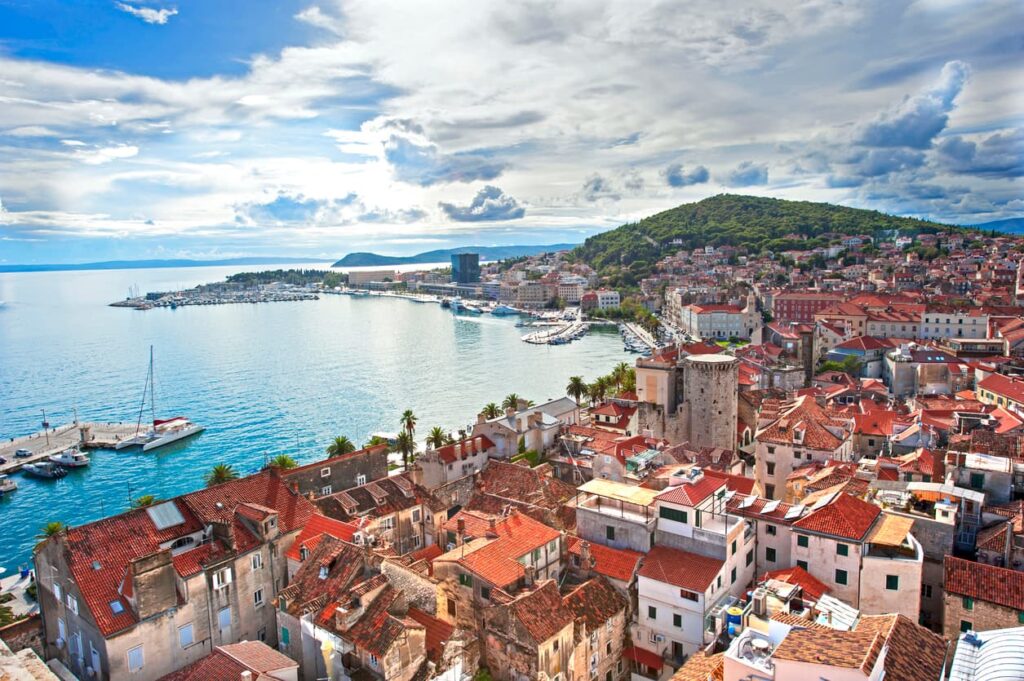
The Adriatic Sea along Croatia’s coast is often described as one of the most beautiful sailing destinations in the world. With its calm waters, predictable winds, and low tidal range (typically under 40 cm), it creates ideal conditions for sailors of all experience levels. The extended yachting season from April to October coincides perfectly with the best time to visit Croatia’s cultural monuments, allowing visitors to combine swimming in secluded bays with exploring centuries-old heritage sites.
What makes yacht charter particularly appealing for UNESCO site enthusiasts is the remarkable accessibility of many heritage locations from the sea. Several of Croatia’s UNESCO treasures are located directly on the coast or on islands, making them perfectly suited for exploration by yacht. Diocletian’s Palace in Split and the Old City of Dubrovnik both feature harbors where vessels can dock within walking distance of these magnificent monuments. The historic town of Trogir is situated on a small island connected to the mainland by bridges, with marinas located on both sides, allowing sailors to moor their yachts and step directly into a UNESCO-protected medieval town.
A typical sailing itinerary might begin in Split, where you can explore Diocletian’s Palace before setting sail to nearby Trogir. From there, the journey could continue to Šibenik to visit the Cathedral of St. James, then on to the islands—perhaps including Hvar with its Stari Grad Plain. The more adventurous might continue south to Dubrovnik, sailing alongside the impressive city walls that rise dramatically from the sea.
Yacht charter options in Croatia cater to all preferences and budgets. Bareboat charters are available for experienced sailors who wish to captain their own vessel, while skippered charters provide a knowledgeable local captain who can navigate to the best spots. For the ultimate in luxury, fully crewed yachts offer complete service with a captain and crew handling all aspects of the journey, including gourmet meals prepared by an onboard chef.

The flexibility of a yacht charter allows visitors to create personalized itineraries that balance cultural exploration with relaxation. You might spend mornings visiting UNESCO sites when they’re less crowded, afternoons swimming in pristine bays, and evenings moored in historic harbors where you can dine at local restaurants and experience the authentic atmosphere of coastal towns after day-trippers have departed.
For those interested in experiencing Croatia’s UNESCO heritage from this unique perspective, yacht charter Croatia options provide the perfect blend of cultural immersion and nautical adventure. Whether you’re an experienced sailor or a first-time charterer, the combination of world-class heritage sites and ideal sailing conditions makes Croatia one of the most rewarding yacht charter destinations in the Mediterranean.
Planning Your Cultural Tour: Practical Tips
Exploring Croatia’s UNESCO World Heritage Sites requires some planning to ensure a rewarding experience. Here are essential tips to help you make the most of your cultural journey through this remarkable country.
Best Times to Visit
Croatia experiences distinct seasonal variations that affect your UNESCO site visits:
- Spring (April-June): Perhaps the ideal time to visit cultural sites, with pleasant temperatures (15-25°C), fewer crowds than summer, and longer daylight hours. May is particularly lovely, with blooming landscapes providing beautiful backdrops for photography.
- Summer (July-August): The peak tourist season brings hot temperatures (often exceeding 30°C) and significantly larger crowds at popular sites like Dubrovnik’s Walls and Diocletian’s Palace. If visiting during this period, plan early morning or late afternoon visits to avoid both heat and crowds.
- Autumn (September-October): Another excellent period for cultural tourism, with warm seas for swimming, mild temperatures, and diminishing crowds. The lighting is particularly beautiful for photography during this season.
- Winter (November-March): While many coastal facilities close during this period, the major UNESCO sites remain open with significantly reduced visitor numbers. Dubrovnik and Split can be magically atmospheric in winter, though some island destinations may have limited transportation options.
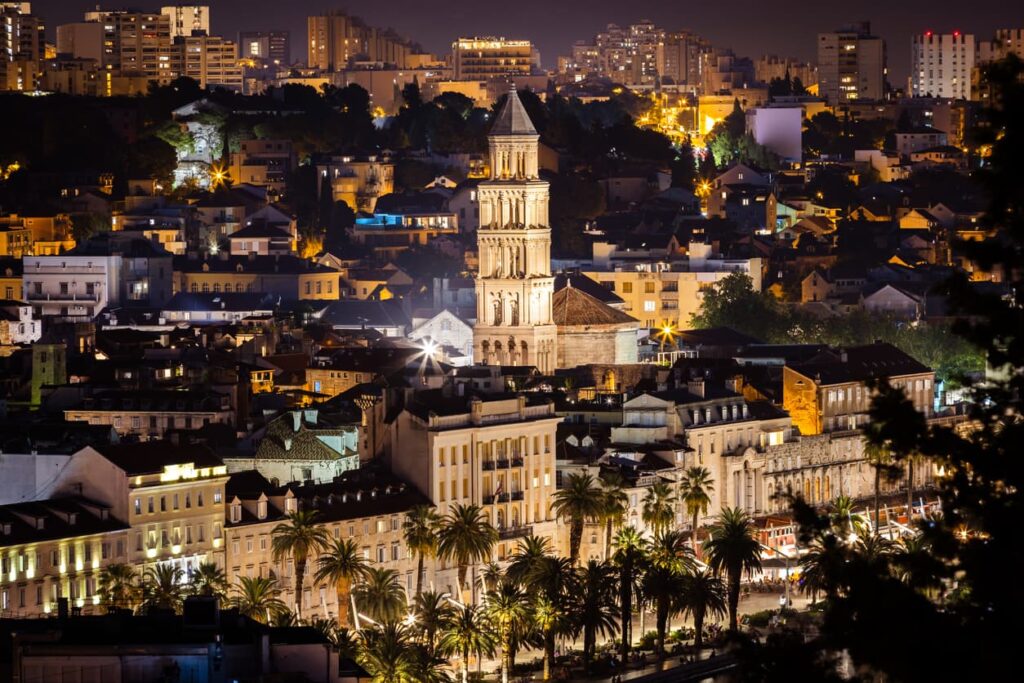
Transportation Between UNESCO Sites
Croatia offers several transportation options for traveling between heritage sites:
- Public Transportation: Croatia’s bus network is extensive and relatively inexpensive, connecting all major cities and many smaller towns. Trains are less useful for coastal travel but good for connections to Zagreb and inland destinations.
- Car Rental: Renting a car provides maximum flexibility, especially for reaching more remote sites like Plitvice Lakes or the Stećci tombstones. Croatia’s roads are generally excellent, though parking in historic centers can be challenging during peak season.
- Ferries and Catamarans: Essential for island hopping, Croatia’s extensive ferry network connects the mainland with inhabited islands. Jadrolinija is the main operator, with both car ferries and faster passenger-only catamarans.
- Private Transfers: For hassle-free travel, private transfers between destinations can be arranged, though at a premium price compared to public transportation.
- Yacht Charter: As mentioned earlier, exploring coastal UNESCO sites by yacht offers a unique perspective and eliminates the need for multiple accommodations.
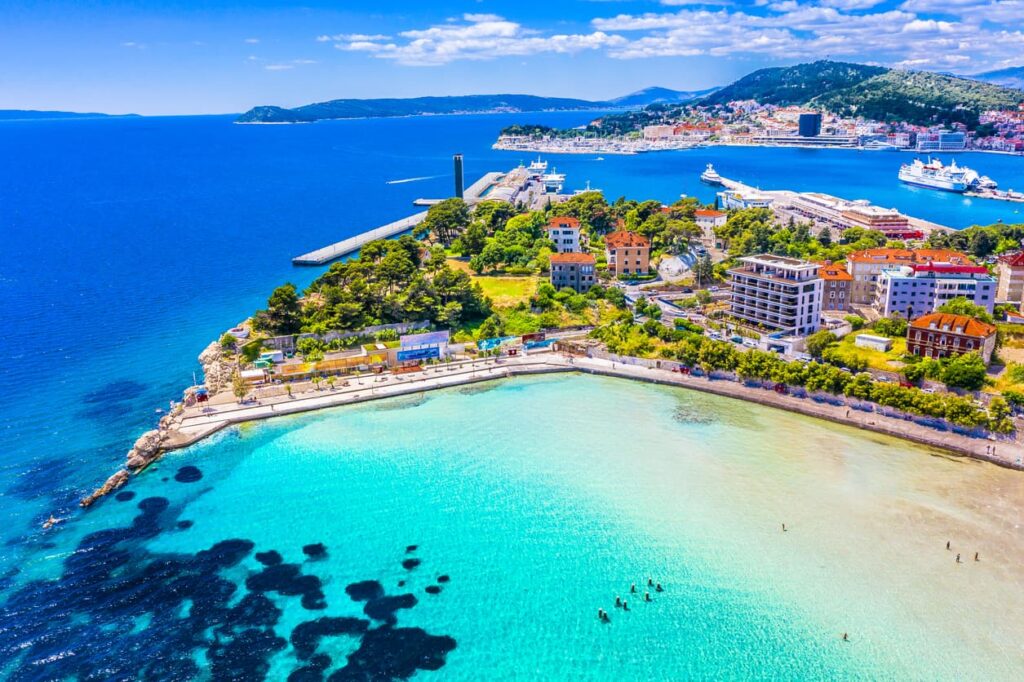
Accommodation Recommendations
Staying near UNESCO sites enhances your experience by allowing early morning or evening visits when day-trippers are absent:
- Split: Consider accommodations within Diocletian’s Palace for a truly immersive experience, though be prepared for some ambient noise. Alternatives in the Varoš or Bačvice neighborhoods offer proximity with more tranquility.
- Dubrovnik: Staying within the Old Town walls provides an unforgettable experience but comes at a premium. The Ploče area east of the Old Town offers excellent views and easier access than the more distant Lapad peninsula.
- Trogir: This small town is perfect for overnight stays, with boutique hotels in converted palaces within the UNESCO zone.
- Plitvice Lakes: Accommodations within the national park are limited but allow early access before day visitors arrive. Several guesthouses and small hotels operate in nearby villages.
Guided Tours vs. Self-Guided Exploration
Both approaches have their merits when visiting UNESCO sites:
- Guided Tours: Particularly valuable for sites with complex histories like Diocletian’s Palace or Dubrovnik, where knowledgeable guides can bring the past to life and point out easily missed details. Group tours are economical, while private guides offer personalized experiences.
- Self-Guided Exploration: With good preparation and perhaps an audio guide, self-guided visits allow flexibility and the freedom to linger at points of personal interest. Many sites offer excellent information panels in multiple languages.
- Combination Approach: Consider starting with a guided tour for orientation and historical context, then returning for independent exploration at your own pace.
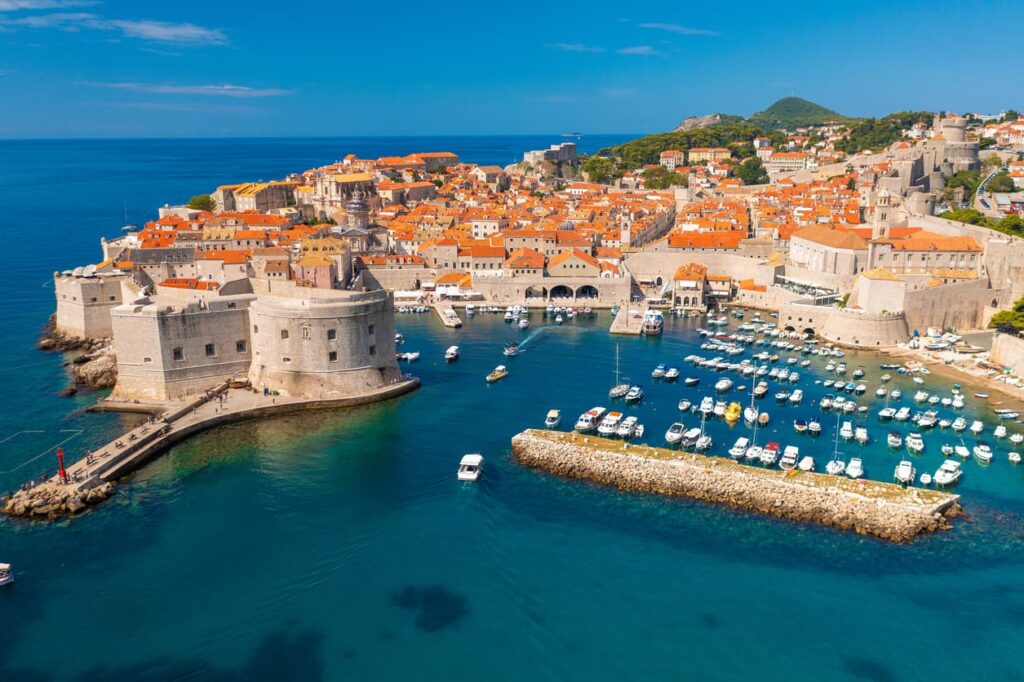
Responsible Tourism Practices
Croatia’s UNESCO sites face challenges from increasing visitor numbers. Practice responsible tourism by:
- Visiting popular sites during off-peak hours or seasons when possible
- Respecting physical barriers and not touching sensitive historical surfaces
- Supporting local businesses rather than international chains
- Learning a few basic Croatian phrases as a courtesy to locals
- Considering carbon offset programs if flying to Croatia
- Choosing tour operators with sustainable practices and smaller group sizes
With thoughtful planning and a respectful approach, your exploration of Croatia’s UNESCO treasures can be both enriching and sustainable, ensuring these remarkable sites remain preserved for future generations.
| Category | Details |
| Total UNESCO Sites | 10 (8 cultural, 2 natural) |
| Most Famous Sites | Diocletian’s Palace (Split), Dubrovnik Old City Walls, Plitvice Lakes National Park |
| Recent Additions | Stećci Medieval Tombstones (2016), Venetian Works of Defence (2017) |
| Top Coastal Sites | Split, Dubrovnik, Trogir, Šibenik, Poreč, Stari Grad Plain (Hvar) |
| Notable Natural Sites | Plitvice Lakes National Park, Primeval Beech Forests (Northern Velebit & Paklenica) |
| Best Time to Visit | April–June and September–October for ideal weather and fewer tourists |
| UNESCO Site Accessibility by Yacht | Sites like Dubrovnik, Split, Hvar, and Trogir are accessible from the sea |
| Recommended Travel Modes | Car rental, public bus, ferry, or yacht charter for coastal exploration |
| Guided Tours | Available at all major sites; recommended for Dubrovnik and Split |
| Responsible Tourism Tips | Visit off-peak, avoid touching heritage surfaces, support local businesses |
Conclusion
Croatia’s UNESCO World Heritage Sites represent an extraordinary convergence of natural beauty and human achievement spanning millennia. From the ingenious Roman engineering of Diocletian’s Palace to the strategic medieval fortifications of Dubrovnik, from the geological wonders of Plitvice Lakes to the ancient agricultural patterns of Stari Grad Plain, these protected sites offer windows into different chapters of European history and natural evolution.
What makes Croatia’s UNESCO heritage particularly special is not just the individual significance of each site, but their remarkable concentration in such a compact country. Within a relatively small geographical area, visitors can experience diverse expressions of human creativity and natural processes that have shaped this crossroads of Mediterranean, Central European, and Balkan influences.
The living nature of many of these sites adds another dimension to their appeal. Unlike purely archaeological remains, places like Diocletian’s Palace and Dubrovnik continue to function as vibrant urban centers where contemporary life unfolds amid ancient stones. This continuity creates a unique atmosphere where history feels immediate and relevant rather than distant and academic.
As tourism in Croatia continues to grow, the challenge of balancing accessibility with preservation becomes increasingly important. UNESCO designation brings not only prestige and protection but also responsibility—for both authorities and visitors. By approaching these sites with respect and awareness, travelers can contribute to their sustainable future while enjoying profound cultural experiences.
Whether you choose to explore Croatia’s UNESCO treasures by land, sea, or a combination of both, the journey promises rich rewards. Beyond the famous landmarks lie lesser-known sites equally worthy of discovery, each offering its own perspective on the complex tapestry of Croatian heritage. In venturing beyond the most photographed attractions to embrace the full spectrum of Croatia’s UNESCO sites, visitors gain a deeper appreciation of this remarkable country’s place in European and world history.
Next, learn more about Croatian cuisine must-try dishes.
FAQs
The most iconic UNESCO sites in Croatia include Diocletian’s Palace in Split, Dubrovnik’s Old City Walls, and Plitvice Lakes National Park. Other must-visits are the Cathedral of St. James in Šibenik, Trogir’s historic town center, and the Euphrasian Basilica in Poreč.
Diocletian’s Palace is a living Roman monument built in the 4th century. It blends Roman architecture with later medieval additions and still functions as the heart of modern-day Split, home to over 3,000 residents.
Yes, many UNESCO coastal and island sites—like Dubrovnik, Trogir, and the Stari Grad Plain on Hvar—are easily accessible by yacht. Croatia’s calm Adriatic waters make yacht charter a scenic and flexible way to explore heritage destinations.
The best times are spring (April–June) and autumn (September–October) for pleasant weather and fewer crowds. Summer is popular but busy, while winter offers quiet access to major sites like Dubrovnik and Split.
Croatia has 10 UNESCO World Heritage Sites—8 cultural and 2 natural. They include architectural wonders, ancient tombstones, Roman palaces, primeval forests, and historic city centers.
Additional Resources
For those wishing to deepen their understanding of Croatia’s UNESCO heritage, the following resources provide valuable information:
Books and Publications
- “Croatia: Aspects of Art, Architecture and Cultural Heritage” by John Julius Norwich
- “Diocletian’s Palace” by Joško Belamarić
- “Dubrovnik: A History” by Robin Harris
- “The Balkans: A Short History” by Mark Mazower
Documentaries and Films
- “The Story of Diocletian’s Palace” produced by Croatian National Television
- “Kings Landing” – behind-the-scenes features on Game of Thrones filming in Dubrovnik
- “The Adriatic: A Living Sea” – documentary featuring Croatia’s coastal heritage
Useful Websites and Apps
- UNESCO World Heritage Centre – official information on all sites
- Croatian National Tourist Board – comprehensive visitor information
- Croatian Museums Online – virtual tours of museums within UNESCO sites
Local Cultural Events
- Split Summer Festival (July-August) – performances within Diocletian’s Palace
- Dubrovnik Summer Festival (July-August) – theater and music events in historic settings
- Days of Diocletian (August) – historical reenactments in Split
- Stari Grad Plain Agricultural Heritage Festival (July) – celebrating traditional farming

